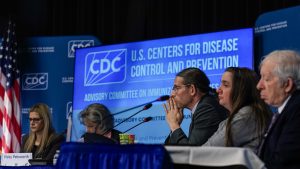EPA investigates cross-border sewage flow from Mexico into California waters
Ella Greene April 17, 2025 0
- The EPA is investigating reports of cross-border sewage contamination flowing from Mexico into southern California waters. EPA Administrator Lee Zeldin plans to visit the area on Tuesday and emphasized the need for a comprehensive plan to resolve the situation.
- Local officials estimated that 31 billion gallons of polluted water have crossed the border since 2023 and reported numerous health issues related to the sewage among residents in the area.
- The sewage issue also caused over 1,000 Navy SEALs and trainees to suffer illnesses during water training exercises in contaminated coastal waters.
Full Story
The U.S. Environmental Protection Agency (EPA) is investigating ongoing reports of cross-border sewage flow from Mexico into southern California coastal waters. This issue drew concern from local communities, public officials and military personnel.
How is the EPA responding to this sewage problem?
In a social media post on Wednesday, April 16, EPA Administrator Lee Zeldin announced plans to visit San Diego on Tuesday, April 22, to further look into the issue. Zeldin stated he will increase efforts to “permanently end decades of raw sewage entering the U.S. from Mexico.” He also emphasized the need for a “comprehensive plan” to urgently address the contamination.
What will Zeldin’s visit to San Diego entail?
An EPA spokesperson confirmed Zeldin’s visit will include a tour of the South Bay International Wastewater Treatment Plant, a helicopter survey of the U.S. southern border and participation in a roundtable with local stakeholders and elected officials.
Zeldin is also scheduled to meet with Navy SEALs who train in coastal waters where the sewage is reportedly present.
How are local officials responding to this situation?
Authorities in the area voiced environmental and public health concerns related to sewage flowing from Tijuana into the Tijuana River, which eventually enters U.S. waters.
In a letter sent to Zeldin in March, the mayor of Imperial Beach, California, Paloma Aguirre, described the situation as being among “America’s most horrendous environmental and public health disasters.” The correspondence also claimed an estimated 31 billion gallons of contaminated water crossed the border since 2023.
“The damage caused by this environmental disaster is immense,” Aguirre wrote. “71% of residents surveyed believe their tap water is unsafe and nearly 50% of households reported a health symptom caused by the sewage crisis, including headaches, nausea, asthma and lung pain.”
What impact has this problem had on military personnel?
Meanwhile, a Department of Defense inspector general report from February found that more than 1,000 Navy SEALs and trainees experienced illnesses — many involving gastrointestinal symptoms — after conducting water training exercises in the area between January 2019 and May 2023.
What happens next?
Zeldin plans to gather firsthand information about the current conditions in the affected region, as well as facilitate discussions with individuals and agencies dealing with the ongoing pollution during his upcoming visit to California.
“I look forward to visiting the border in the near future to view this issue firsthand, meet with elected officials and ensure permanent solutions are urgently implemented to stop years of Mexican sewage impacting the U.S.,” Zeldin said.
Related Stories
Ella Rae Greene, Editor In Chief
Ella Greene
Ella and the staff at Clear Media Project (CMP) curate these articles.
Unless otherwise noted CMP does not write these articles.
The views, thoughts, and opinions expressed in the articles published on this blog belong solely to the original authors and do not necessarily reflect the views of the blog owner. The blog owner does not claim ownership of the content shared by contributors and is not responsible for any inaccuracies, errors, or omissions.
All rights and credits goes to its rightful owners. No Copyright Infringement is intended. If you believe any content infringes on your rights, please contact us for review and potential removal.





